Insta360 GO Ultra vs GO 3S: worth the upgrade?

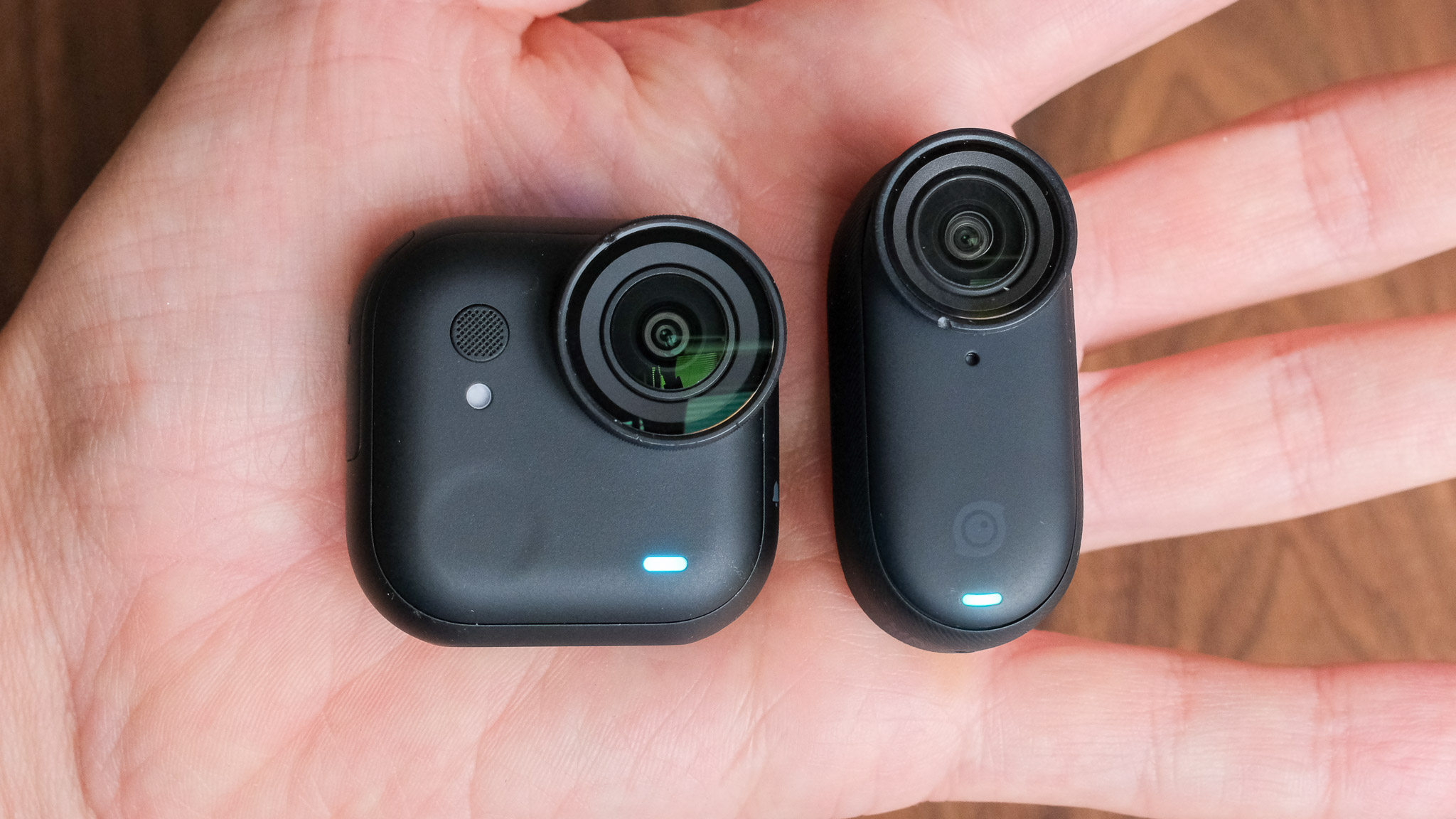
The Insta360 GO Ultra is here, and while it may look like another small step in the GO series, it's actually a giant leap in performance.
With a bigger sensor, crisper 4K60 video, longer battery life, and a host of AI-powered tricks, the GO Ultra feels like a creative tool built for serious content makers.
But how does it stack up against the Insta360 GO 3S, which only launched a year ago and is still one of the most compact, fun-to-use action cameras around?
If you're torn between the two, or wondering if it's worth upgrading, you're in the right place. I’ve reviewed both models and lived with them in the real world. Here's how the GO Ultra and GO 3S compare across specs, shooting performance, battery life, and overall usability.
Insta360 GO Ultra vs GO 3S
Price and availability
The Insta360 GO Ultra launched in August 2025, priced at $449.99 / £389 / €429 for the Standard Bundle. It includes the camera, Action Pod, Magnet Pendant, Easy Clip, Safety Cord, USB-C cable, and a Lens Guard. The Creator Bundle ups the ante with a Mini Tripod 2.0, Quick Release Mount, and Pivot Stand for $499.99 / £429 / €479.
In comparison, the GO 3S debuted a year earlier in June 2024 at $400 / £350 (64GB version), and has since dropped to around $320 / £280. That makes it significantly more affordable, especially for newcomers to action cameras or those who don’t need the Ultra’s extra muscle.
Both are available at the Insta360 Store.
Get all the latest news, reviews, deals and buying guides on gorgeous tech, home and active products from the T3 experts
Winner: Insta360 GO 3S, which is the better deal for budget-conscious users – more than enough camera for most casual creators.
Design and durability
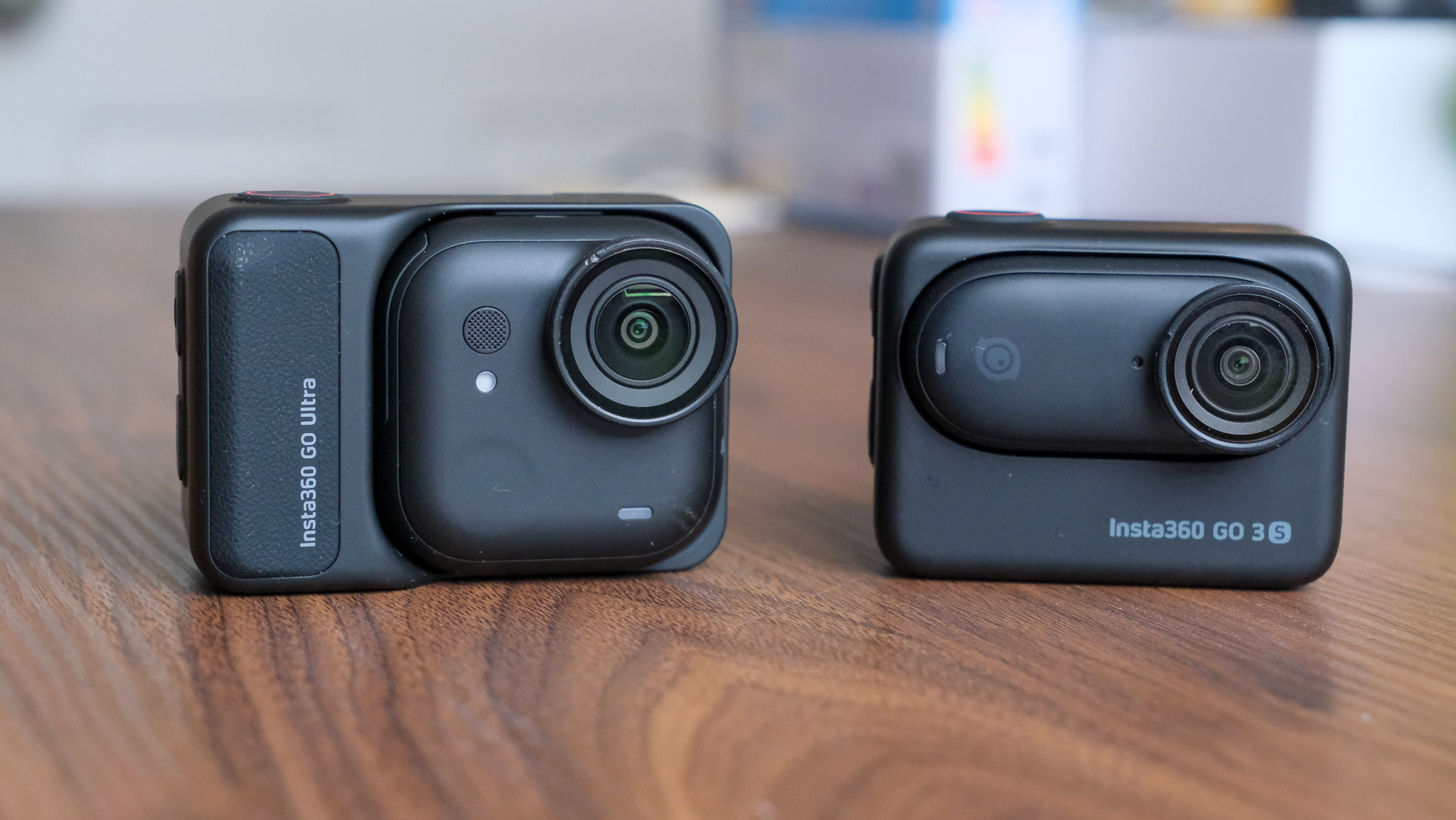
At a glance, the GO Ultra and GO 3S follow the same familiar format: a tiny camera that slots into a modular Action Pod with a flip-up screen. But look closer and you’ll spot some big changes to both the layout and the feel of the hardware.
The GO Ultra’s camera unit ditches the GO 3S’s pill-like design in favour of a squarer, flatter body. It’s noticeably heavier, weighing in at 53g compared to the GO 3S’s 39g, but that added bulk comes with serious internal upgrades, including a larger sensor, a new ambient light sensor, and removable microSD storage.
There are two orientation LEDs on the Go Ultra – one on the front and one on the top – to help you quickly figure out how it’s positioned. However, it would’ve been helpful if Insta360 had added more explicit visual cues or printed indicators for vertical or horizontal shooting.
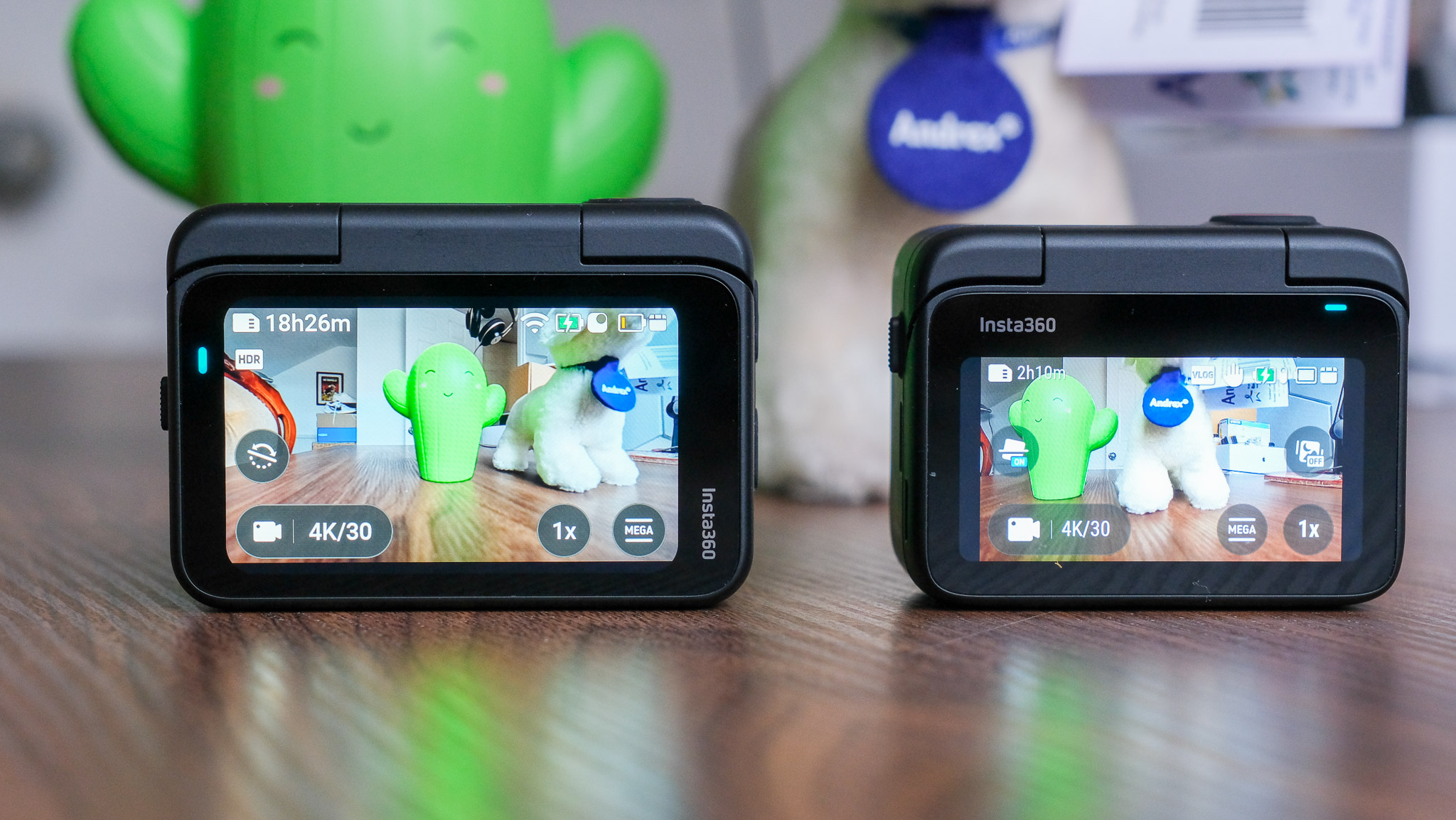
The Action Pod has also grown, both in size and screen real estate. It now features a 2.5-inch flip-up touchscreen, a welcome upgrade from the 2.2-inch display on the GO 3S, and the overall layout has been tweaked.
The record button, power button, and mic port have all been shifted slightly to make room for a DSLR-style grip on the right-hand side, which gives the pod a more substantial, camcorder-like feel in the hand.
Another key change is the mounting system: where the GO 3S clipped in from the sides, the GO Ultra locks in from the bottom, so older mounts aren’t compatible.
Even the accessories have had a rethink. The included pendant now supports an adjustable tilt, which makes POV footage easier to frame, especially if you're wearing it around your neck. The Flexi Strap and Easy Clip Headband have also been updated to stay more secure during high-movement activities.
Winner: Insta360 GO Ultra. It’s heavier and a little chunkier, but the GO Ultra is a clear step up in build quality, ergonomics, and usability.
Image quality
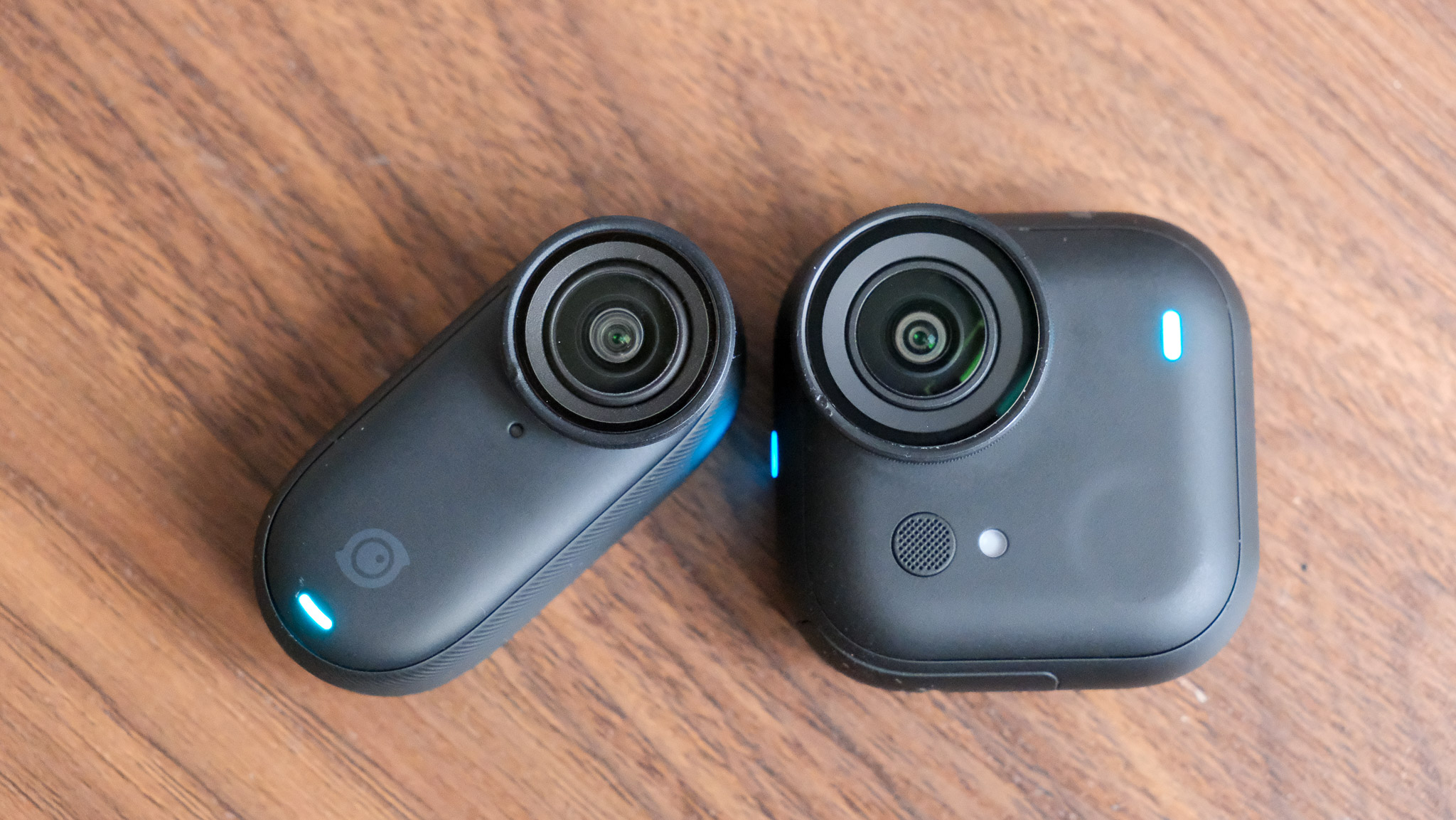
The GO Ultra marks a real step up in visual fidelity, thanks in large part to its new 1/1.28-inch sensor, a noticeable jump from the 1/2.3-inch sensor found in the GO 3S. That extra sensor size makes a difference. Footage looks crisper, dynamic range is better, and low-light performance is a huge improvement, particularly in PureVideo mode, which uses AI to reduce noise and boost clarity in darker environments.
Still photos also have had a big glow-up. The GO Ultra can now shoot up to 50MP stills, compared to the GO 3S’s 9MP or 12.5MP options. That means more flexibility for cropping, better detail in landscapes, and a noticeable difference when viewing on larger screens. Active HDR has also been refined, improving contrast and colour in tricky lighting conditions, ideal for sunset vlogs, shaded trails, or bright city scenes.
Another major upgrade is frame rate. The GO Ultra can record 4K at 60fps, making motion smoother and more immersive, while the GO 3S tops out at 4K30. For fast action, it’s a difference you can feel. There’s also 2x 4K clarity zoom on the Ultra, letting you punch in without destroying image quality, a feature the GO 3S doesn’t offer.
Winner: Insta360 GO Ultra. With a larger sensor, higher frame rates, PureVideo and HDR upgrades, and 50MP stills, the GO Ultra is in a different class to its predecessor.
Features and modes
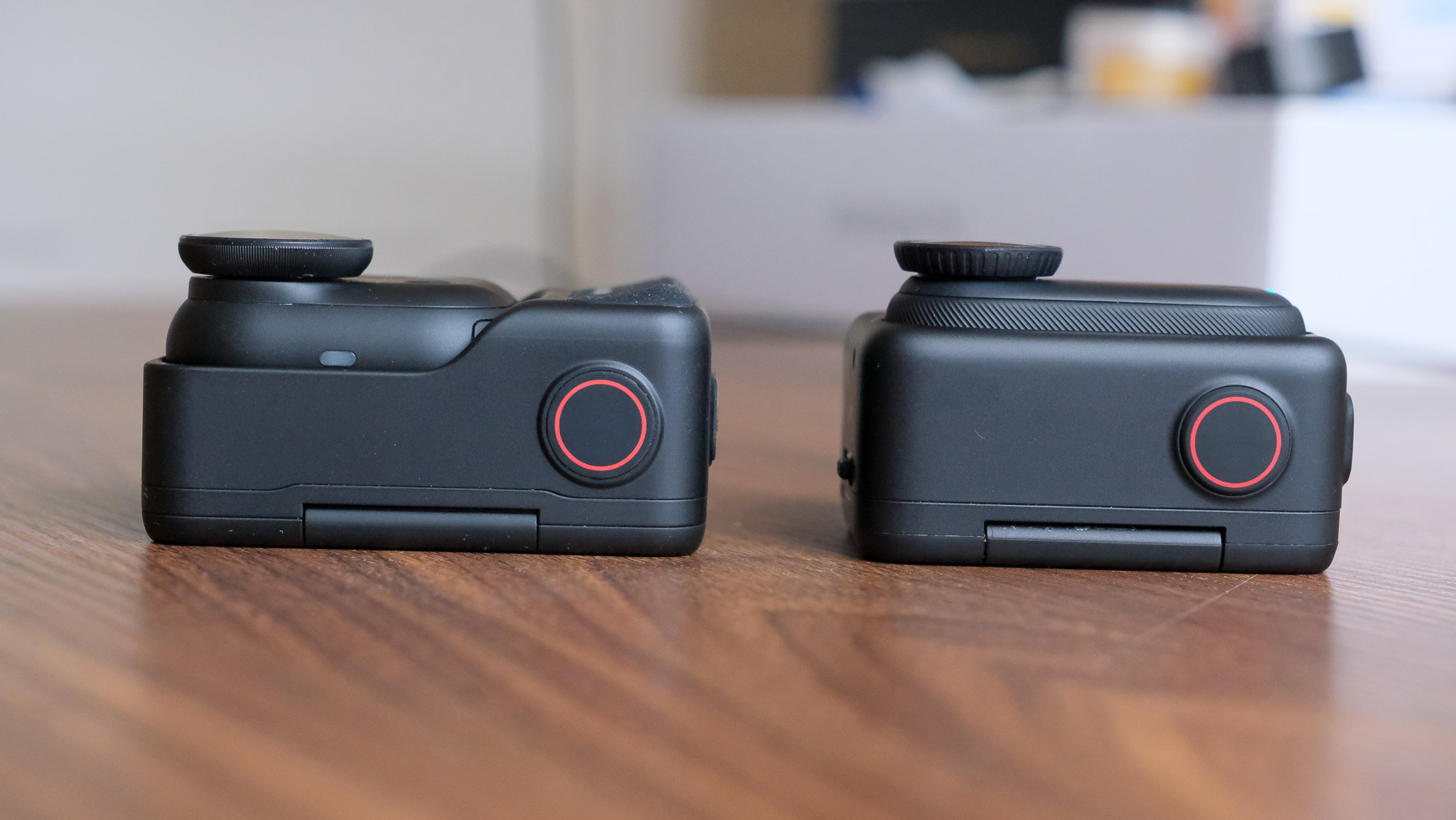
Insta360’s GO cameras have always punched above their weight when it comes to creative features, and the GO Ultra continues that trend with an even broader toolkit aimed squarely at content creators.
The GO 3S is no slouch, either. It offers all the Insta360 classics like FreeFrame video (which lets you reframe footage after shooting), TimeShift, Timelapse, Slow Motion, and HDR Photo modes. It’s more than enough for everyday use, especially for quick vlogs, short-form content, and first-person footage.
The GO Ultra builds on the foundations laid by its predecessor with more refined and more powerful tools. Most notably, it introduces PureVideo, an AI-enhanced low-light video mode that dramatically improves clarity and brightness in dark settings.
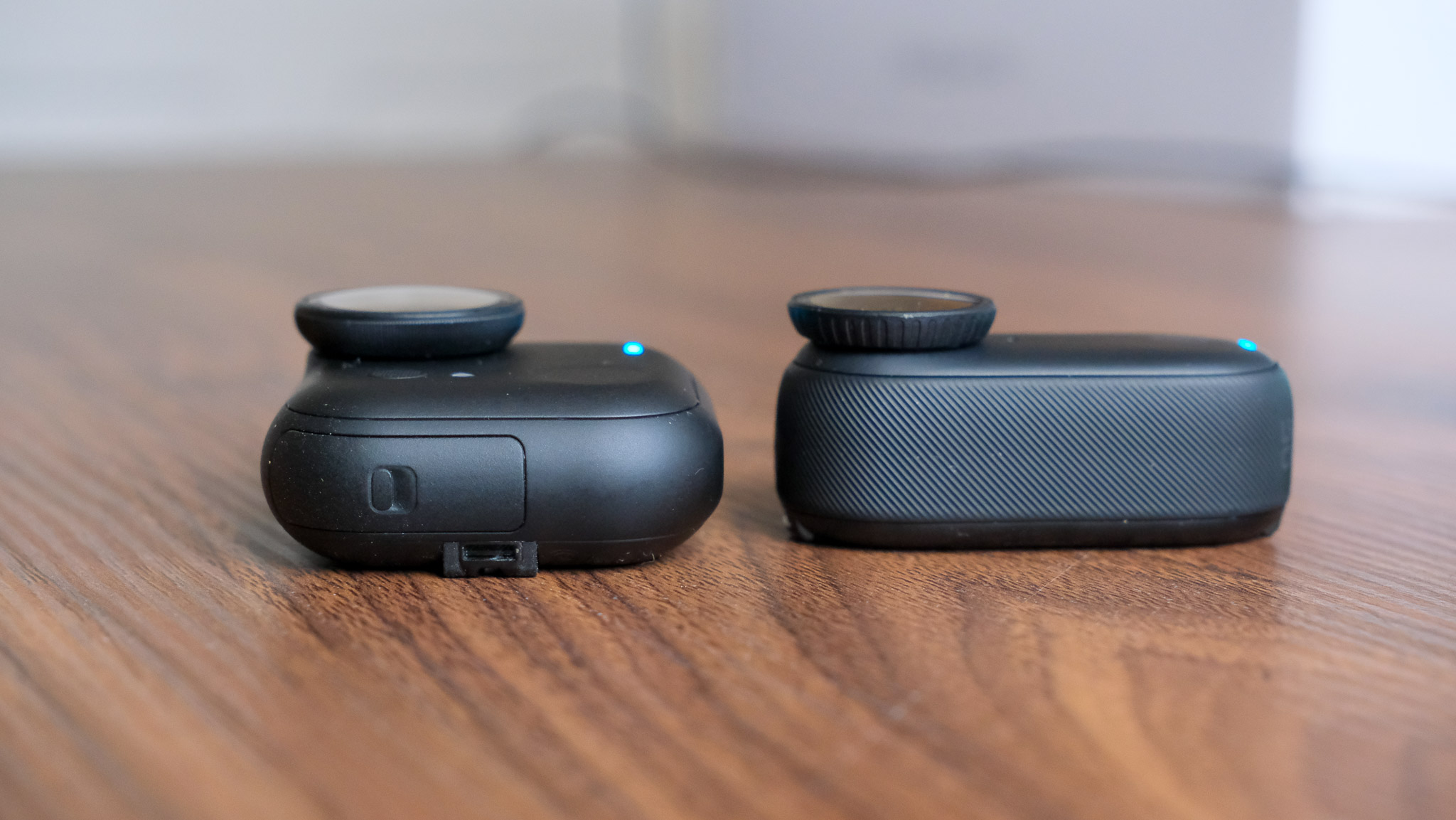
It also supports 4K Active HDR, which has been reworked to handle harsh lighting transitions and high-contrast scenes with less clipping and more detail. Portrait filters and smart skin-tone enhancements, borrowed from Insta360’s Ace Pro series, make it easier to get polished footage straight out of the camera.
There's also a noticeable push toward family-focused and creator-centric features. Toddler Titan Mode, for example, is designed for capturing close-up expressions with a micro lens and hat clip, while the new Family Moments feature in the app uses AI to automatically compile highlights of your week.
The GO Ultra also supports external Bluetooth microphones like DJI Mic 2 and even Apple AirPods Pro 2, and includes Apple Find My integration and a new anti-loss safety cord, features not found on the GO 3S.
Winner: Insta360 GO Ultra. Both cameras are packed with features, but the GO Ultra unlocks a new tier of creative control and flexibility.
Battery life and charging
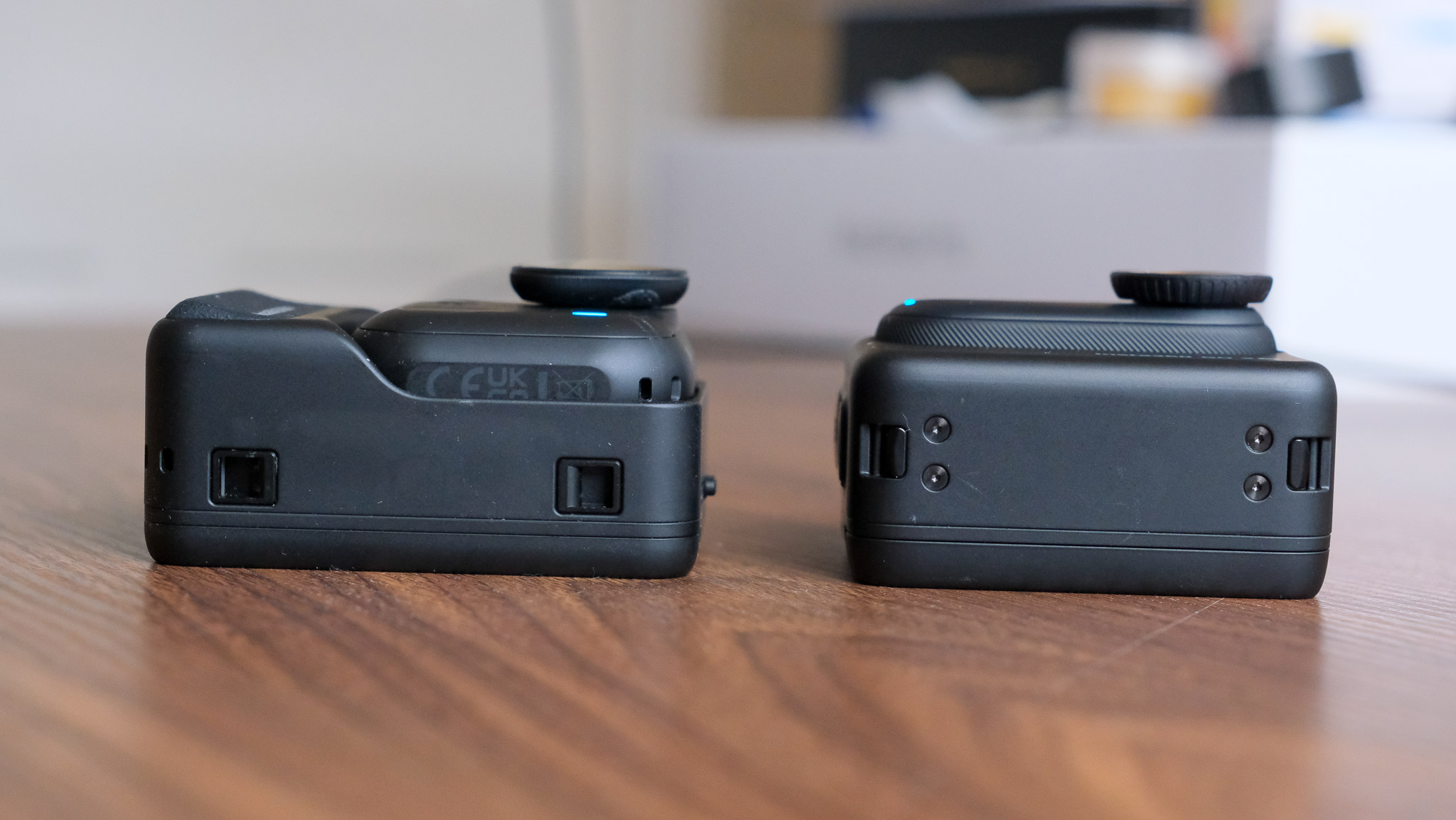
Battery life has always been a sticking point for GO users, especially for those trying to film more than just short bursts of content. With the GO Ultra, Insta360 finally addresses that in a big way, and the difference is night and day.
The standalone GO Ultra camera lasts up to 70 minutes on a full charge, compared to the GO 3S’s 38 minutes. When paired with the Action Pod, the GO Ultra stretches that to a hefty 200 minutes, while the GO 3S tops out at 140 minutes.
Better still, the GO Ultra can reach 80% in just 12 minutes when charging the camera on its own, and about 18 minutes with the Action Pod. In contrast, the GO 3S needs 23 minutes for the camera and a much longer 47 minutes when charging with the pod.
There are still some caveats. Like most action cams, the GO Ultra runs warm when recording long clips in high resolutions (4K60, for example), and heat can affect overall battery performance in those conditions. Still, even with occasional warmth, the improvements in runtime and charge speed are hard to ignore.
Winner: Insta360 GO Ultra. Double the runtime, half the charging time. It’s a clear win for the Ultra.
Verdict
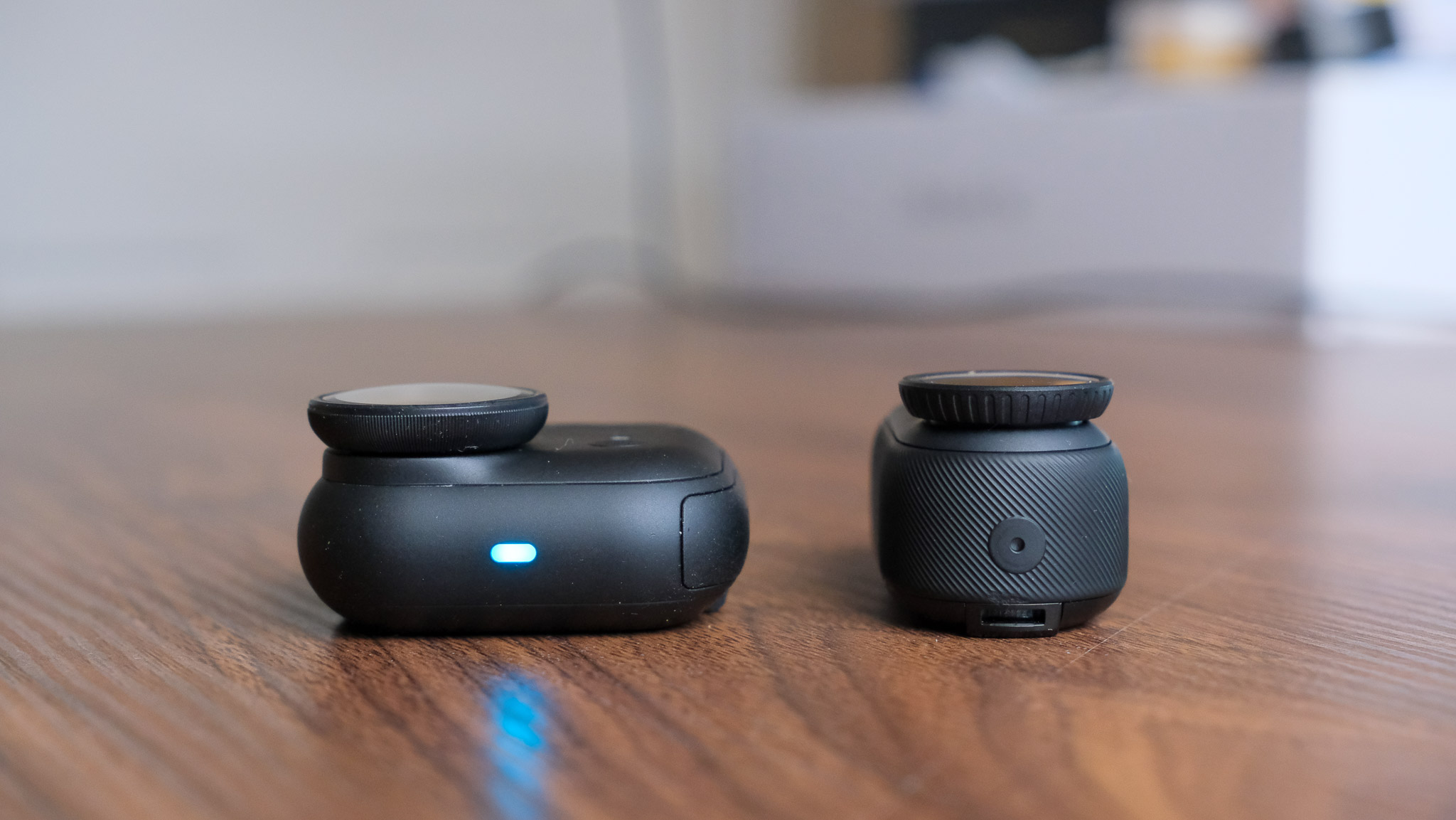
The GO 3S is still a fantastic little camera. It’s lightweight, relatively affordable, and packed with enough features to satisfy casual creators and everyday adventurers. If you already own one and use it for short POV clips or quick edits, there’s not a huge reason to upgrade; it still does the job, and does it well.
But the GO Ultra is a different beast. It’s heavier and more expensive, yes, but it earns that price tag with genuine upgrades across the board: longer battery life, faster charging, a better screen, swappable storage, more refined video modes, and noticeably improved image quality.
It feels like Insta360 is finally positioning the GO series as a serious creative tool: not just a quirky wearable cam, but a modular rig you can build into your content workflow.
Insta360 has a habit of releasing cameras quickly, and the GO Ultra might feel like it’s arriving hot on the heels of the GO 3S, but unlike some rapid-fire updates, this one brings meaningful changes that push the category forward.
Overall winner: Insta360 GO Ultra. This is the most capable, creator-focused GO camera Insta360 has made. Period.

Matt Kollat is a journalist and content creator who works for T3.com and its magazine counterpart as an Active Editor. His areas of expertise include wearables, drones, fitness equipment, nutrition and outdoor gear. He joined T3 in 2019. His byline appears in several publications, including Techradar and Fit&Well, and more. Matt also collaborated with other content creators (e.g. Garage Gym Reviews) and judged many awards, such as the European Specialist Sports Nutrition Alliance's ESSNawards. When he isn't working out, running or cycling, you'll find him roaming the countryside and trying out new podcasting and content creation equipment.
You must confirm your public display name before commenting
Please logout and then login again, you will then be prompted to enter your display name.